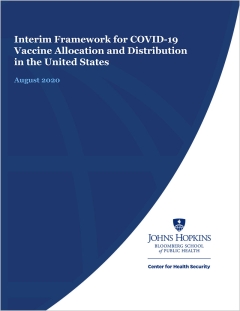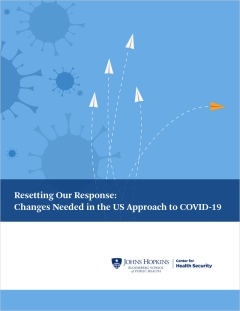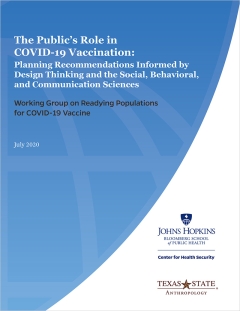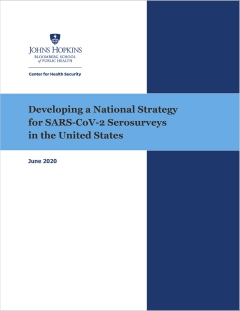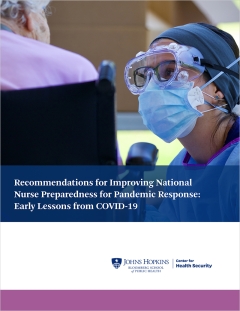The Johns Hopkins Center for Health Security, a World Health Organization (WHO) Collaborating Centre on Global Health Security, has worked with WHO on the development of various tools and technical guidance for mass gatherings in the context of COVID-19. The primary aim of this partnership is to encourage stakeholders to use a risk-informed decision-making process when planning for mass gatherings and, specifically, to identify and mitigate the risk of spreading COVID-19 during the mass gathering. This process includes conducting risk assessments to determine the overall risk of disease spread connected to a mass gathering.
In view of the current COVID-19 pandemic, WHO, with the support of the Center and other members of the Novel Coronavirus-19 Mass Gatherings Expert Group, has developed a series of risk assessment tools and other resources for generic as well as sports- and religious-specific mass gatherings. These risk assessment tools include a risk evaluation, mitigation, and communication strategy to aid host countries and organizers of mass gatherings in assessing the specific risk of COVID-19 to their event. A training course has also been created that provides a brief overview of mass gathering planning during COVID-19 and walks users through the use of the risk assessment tools.
Resources for mass gathering planning in the context of COVID-19 can be found at the following link after selecting “COVID-19: Mass Gatherings” from the drop down menu.
Mass Gathering Risk Assessment Tools
- WHO Mass Gathering COVID-19 Risk Assessment Tool – Generic Events (revised July 10, 2020). Link / Excel Tool
- WHO Mass Gathering COVID-19 Risk Assessment Tool – Sports Events (revised July 10, 2020). Link / Excel Tool
- WHO Mass Gathering COVID-19 Risk Assessment Tool – Religious Events (revised July 10, 2020). Link / Excel Tool


